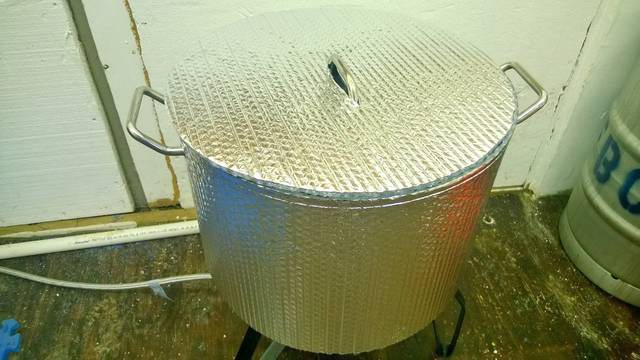Supertrapped
Well-Known Member
Can't remember who did this, but I remember it was on here that'd I'd seen it.
Went to Lowe's. Spent $20 on a roll of reflectix insulation. Rolled it out, measured, cut, and cut slits for the handles. I did a double layer. Has a heat resistance of 180. Most of us strike generally at 160ish, so it's all good.

I tested out this weekend. Heated up the water to about 180, turned off the burner, and let cool to 161. Dropped in the bag and grains, stirred, covered, and slid on the insulation. 60 minute mash. I opened to stir at 20min and 40min mark. The insulation held the mash within 2-3 degrees for the whole period. $20 well spent, I'd say. Cheers.
Went to Lowe's. Spent $20 on a roll of reflectix insulation. Rolled it out, measured, cut, and cut slits for the handles. I did a double layer. Has a heat resistance of 180. Most of us strike generally at 160ish, so it's all good.

I tested out this weekend. Heated up the water to about 180, turned off the burner, and let cool to 161. Dropped in the bag and grains, stirred, covered, and slid on the insulation. 60 minute mash. I opened to stir at 20min and 40min mark. The insulation held the mash within 2-3 degrees for the whole period. $20 well spent, I'd say. Cheers.



















































![Craft A Brew - Safale S-04 Dry Yeast - Fermentis - English Ale Dry Yeast - For English and American Ales and Hard Apple Ciders - Ingredients for Home Brewing - Beer Making Supplies - [1 Pack]](https://m.media-amazon.com/images/I/41fVGNh6JfL._SL500_.jpg)







